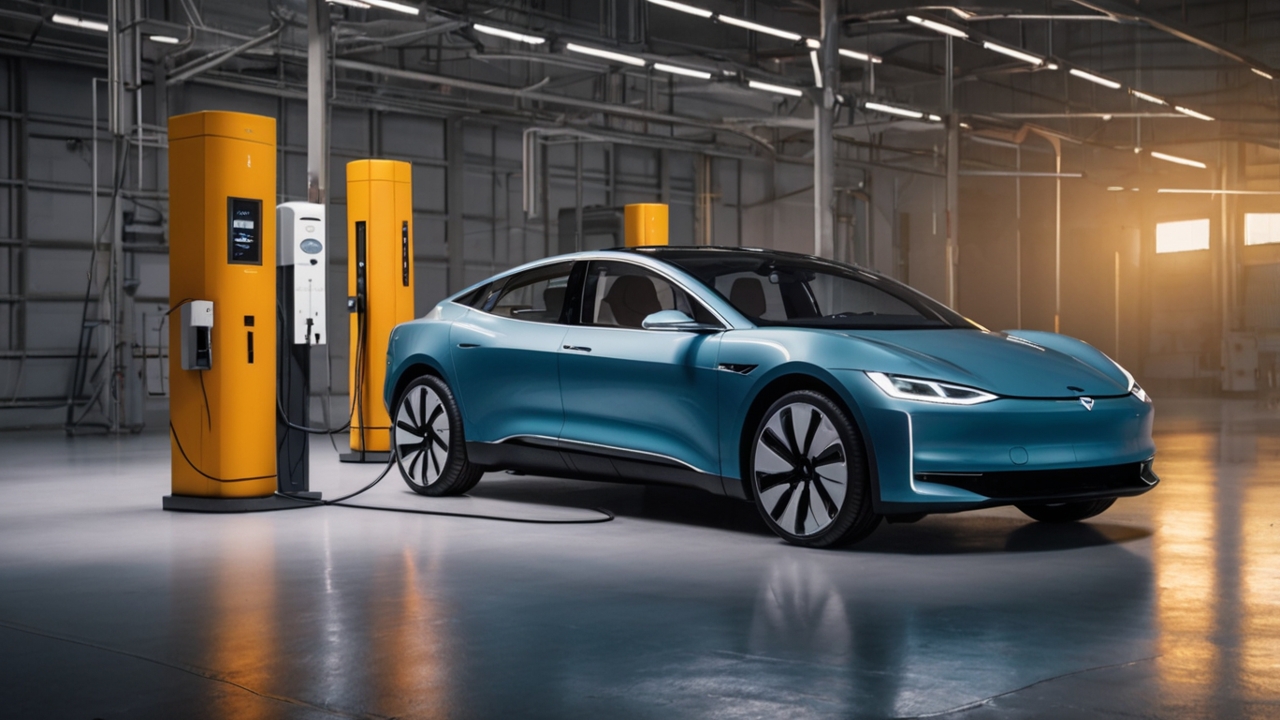How to Identify Malfunctions in Electric Vehicles Before It’s Too Late
Bukemersanacokyakisir – Modern electric vehicles (EVs) are engineered with advanced technology, but that doesn’t make them immune to malfunctions. In fact, the complexity of their systems means that issues can arise from various components from battery management to software calibration. Learning how to identify malfunctions early is not just about vehicle maintenance; it’s about safety. Ignoring early warning signs could lead to reduced performance, costly repairs, or even complete vehicle shutdowns.
As someone who’s followed EV developments for years, I’ve seen how preventive awareness saves drivers from serious trouble. Recognizing subtle cues and acting quickly can make all the difference between a small inconvenience and a dangerous failure.
“Read also: Anthropic’s Google TPU Deal Signals a New Era for Enterprise AI Infrastructure“
Dashboard Indicators: Your Vehicle’s First Warning System
The dashboard is the electric vehicle’s primary communication tool. When something goes wrong, the car often alerts the driver through visual warnings such as flashing icons, warning lights, or specific error messages. These signals should never be ignored.
According to Sony Susmana, Training Director of Safety Defensive Consultant Indonesia (SDCI), EV owners must understand each symbol on their dashboard. “The risk of malfunction in electric vehicles varies widely, but the most dangerous cases can lead to loss of control and accidents,” he told Kompas.com.
In my view, this emphasizes a crucial point your dashboard isn’t just decorative; it’s the car’s voice. Whether it’s a battery warning or a traction control alert, it’s a call to action, not a suggestion.
Performance Drops as a Sign of System Issues
Another major indicator that something is wrong is a sudden drop in performance. You might notice weaker acceleration, slower throttle response, or reduced top speed. These changes often mean the system has entered a protective mode to prevent further damage.
Rambo, Head Mechanic at Chery Yogyakarta, explained that EV malfunctions vary in severity. “Drivers can usually detect a malfunction when the instrument cluster displays a warning message, either as text or an icon,” he said.
From experience, I’d add that drivers should pay close attention to subtle changes. If the car feels sluggish or inconsistent, it might be an early sign of software or power management issues.
Recognizing Minor vs. Major Malfunctions
Not all warnings mean disaster some indicate minor problems that still need attention. For example, a tire malfunction symbol (a flat tire icon with an exclamation mark) is considered mild, but ignoring it could lead to dangerous consequences later.
Rambo pointed out that more serious malfunctions often involve the battery system. These could be triggered by weak cells, faulty control units, or overheating. When this happens, the vehicle may limit power output or, in extreme cases, shut down completely.
In my opinion, the key is perspective treat every warning seriously, but respond proportionally. Quick diagnosis can prevent a minor fault from escalating into an expensive or hazardous issue.
Understanding Battery Malfunctions: The Heart of Every EV
The battery is the soul of an electric vehicle, and when it malfunctions, the consequences can be severe. Common symptoms include reduced range, charging failures, or an overheating alert. Some EVs automatically reduce performance to preserve safety when battery health drops below a threshold.
If you notice any of these symptoms, stop driving immediately and contact your service center. Continuing to drive could trigger system shutdowns or permanent cell damage. As EV technology evolves, manufacturers are introducing AI-based diagnostics to help detect these faults earlier a promising sign for future reliability.
Charging Problems: A Hidden Sign of Malfunction
Many EV owners overlook issues that appear during charging sessions. If your car takes longer than usual to charge, stops charging unexpectedly, or displays inconsistent percentages, it could signal an internal malfunction.
Sometimes the problem lies in the charging port or cable, but in other cases, it’s linked to the onboard charger or battery system. From my perspective, monitoring charging behavior is one of the simplest ways to prevent unexpected breakdowns. The charging process is like your vehicle’s “heartbeat check” irregularities shouldn’t be ignored.
“Read also: OpenAI Transforms ChatGPT into a Custom Enterprise Analyst by Connecting to Company Data“
When the Car Enters Limp Mode or Shuts Down
In serious cases, an electric vehicle may activate “limp mode” a safety protocol that limits speed and power output. This mode protects vital components from further damage. However, if the issue worsens, the vehicle could shut down completely to prevent fire or electrical hazards.
If this happens, the best response is to stop the vehicle safely, contact your manufacturer’s emergency support, and avoid trying to restart the car repeatedly. Forcing the system could worsen the malfunction. I always advise drivers to treat limp mode as a red flag it’s your car’s way of saying, “I need help now.”
What to Do When You Suspect a Malfunction
When your EV displays warning lights, unusual performance, or charging irregularities, the safest approach is to consult professionals. Visit an authorized service center or, if the car can’t move, call for certified roadside assistance.
According to Rambo, “If the car is still able to move but shows a malfunction warning, do not delay visiting the workshop.” Early inspection not only protects the vehicle but can also prevent accidents.
In my opinion, adopting a proactive mindset is part of being a responsible EV owner. Just as we check our health regularly, our vehicles deserve the same level of care especially when they rely on advanced electrical systems.
Prevention Is Always Better Than Breakdown
Learning to identify malfunctions in electric vehicles is more than technical know-how it’s a commitment to safety and responsibility. The future of mobility depends on how well we understand the machines we drive.
Electric cars are intelligent, but they still rely on human awareness. By recognizing the early signs of trouble from dashboard warnings to subtle performance shifts drivers can prevent small faults from turning into critical failures.
As the EV revolution accelerates, remember this: technology can guide you, but attentiveness will always protect you. In the world of electric mobility, awareness is not just power it’s survival.



